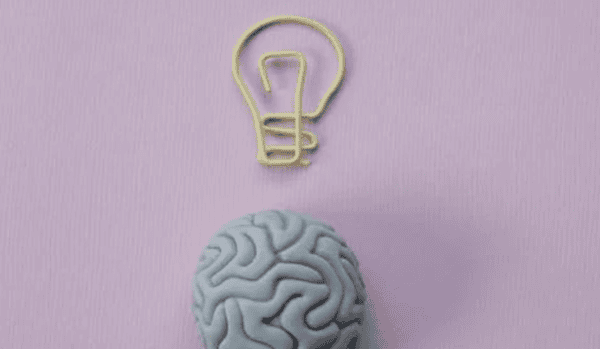In an era where information is at our fingertips, understanding the psychology of learning is more crucial than ever for college students. This knowledge not only enhances academic performance but also nurtures a lifelong love for learning. In this article, we’ll explore the fascinating world of learning psychology, sprinkled with facts and statistics, presented in a friendly and informative tone.
The Basics of Learning Psychology
Learning psychology delves into how we absorb, process, and retain new information or skills. According to educational psychologist Benjamin Bloom, learning domains are categorized into cognitive (mental skills), affective (emotional areas), and psychomotor (physical skills).
Cognitive Domain
This domain involves mental processes related to learning. It’s further divided into six levels, as per Bloom’s Taxonomy: Remembering, Understanding, Applying, Analyzing, Evaluating, and Creating. A study by the National Training Laboratories found that teaching methods dramatically affect retention rates, with lecture-style teaching having a 5% retention rate, while practice by doing offers a 75% retention rate.
Affective Domain
It involves emotions, attitudes, and feelings. Research shows that emotions significantly impact learning. Positive emotions like curiosity and interest can enhance learning, while negative emotions like anxiety can impede it.
Psychomotor Domain
This is about physical movement, coordination, and use of motor-skill areas. Learning in this domain is often visible as learners develop new skills.
Learning Styles
- Visual (Spatial): Visual learners prefer using images and spatial understanding. Infographics and diagrams are helpful for them.
- Aural (Auditory-Musical): These learners prefer using sound and music. Lectures and discussions work best for them.
- Verbal (Linguistic): They prefer using words in writing and speech.
- Physical (Kinesthetic): Physical learners prefer using their body, hands, and sense of touch.
- Logical (Mathematical): These learners prefer using logic, reasoning, and systems.
- Social (Interpersonal): These people learn best with others.
- Solitary (Intrapersonal): They prefer to work alone and use self-study.
It’s essential to note that Howard Gardner’s Theory of Multiple Intelligences suggests people have different kinds of ‘intelligences,’ and learning styles are just preferences, not fixed traits.
Learning and Memory
Memory plays a vital role in learning. There are three main stages of memory processing:
- Encoding: This is when new information is changed into a form that can be stored.
- Storage: It’s the creation of a permanent record of the encoded information.
- Retrieval: Recalling or using previously learned information.
The Ebbinghaus Forgetting Curve shows that without reinforcement, information is quickly forgotten, where approximately 56% of information is lost within an hour, 66% after a day, and 75% after six days.

Strategies for Effective Learning
- Active Learning: Engaging with the material, like summarizing, questioning, and teaching others, can significantly improve retention.
- Spaced Practice: Spreading out study sessions over time is more effective than cramming.
- Interleaving Practice: Mixing different topics or forms of practice can enhance learning more than focusing on one skill at a time.
- Elaborative Interrogation: Asking ‘why’ and explaining how things work helps in understanding and remembering information.
- Self-Explanation: Explaining a concept in your own words is a powerful learning tool.
- Dual Coding: Combining words and visuals can improve learning.
- Mnemonic Devices: Using aids like acronyms or rhymes helps in memorizing.
- Growth Mindset: Believing that intelligence can be developed encourages students to embrace challenges, persist in the face of setbacks, see effort as the path to mastery, learn from criticism, and find lessons and inspiration in the success of others.
The Role of Technology in Learning
Technology has revolutionized learning. Online resources, educational apps, and virtual classrooms offer varied and interactive learning opportunities. According to a report by Global Industry Analysts, the global e-learning market is expected to reach $325 billion by 2025. This trend underlines the increasing reliance on technology in education.

Mental Health and Learning
Mental health is closely linked to learning. Stress and anxiety can negatively affect memory and cognitive functions, making learning more challenging. On the other hand, positive mental health can enhance cognitive abilities and improve academic performance. According to the American Psychological Association, 61% of college students seeking counseling report anxiety, with academic performance being a significant stress factor.
The psychology of learning is a vast and dynamic field. Understanding it can transform the way college students approach their studies, making learning more efficient, enjoyable, and effective. By acknowledging individual learning styles, employing effective study strategies, and maintaining a positive mindset, students can unlock their full learning potential. As we continue to explore and understand the complexities of the human mind, the journey of learning remains an ever-evolving, fascinating adventure.
Support us!
All your donations will be used to pay the magazine’s journalists and to support the ongoing costs of maintaining the site.
Share this post
Interested in co-operating with us?
We are open to co-operation from writers and businesses alike. You can reach us on our email at [email protected]/[email protected] and we will get back to you as quick as we can.










